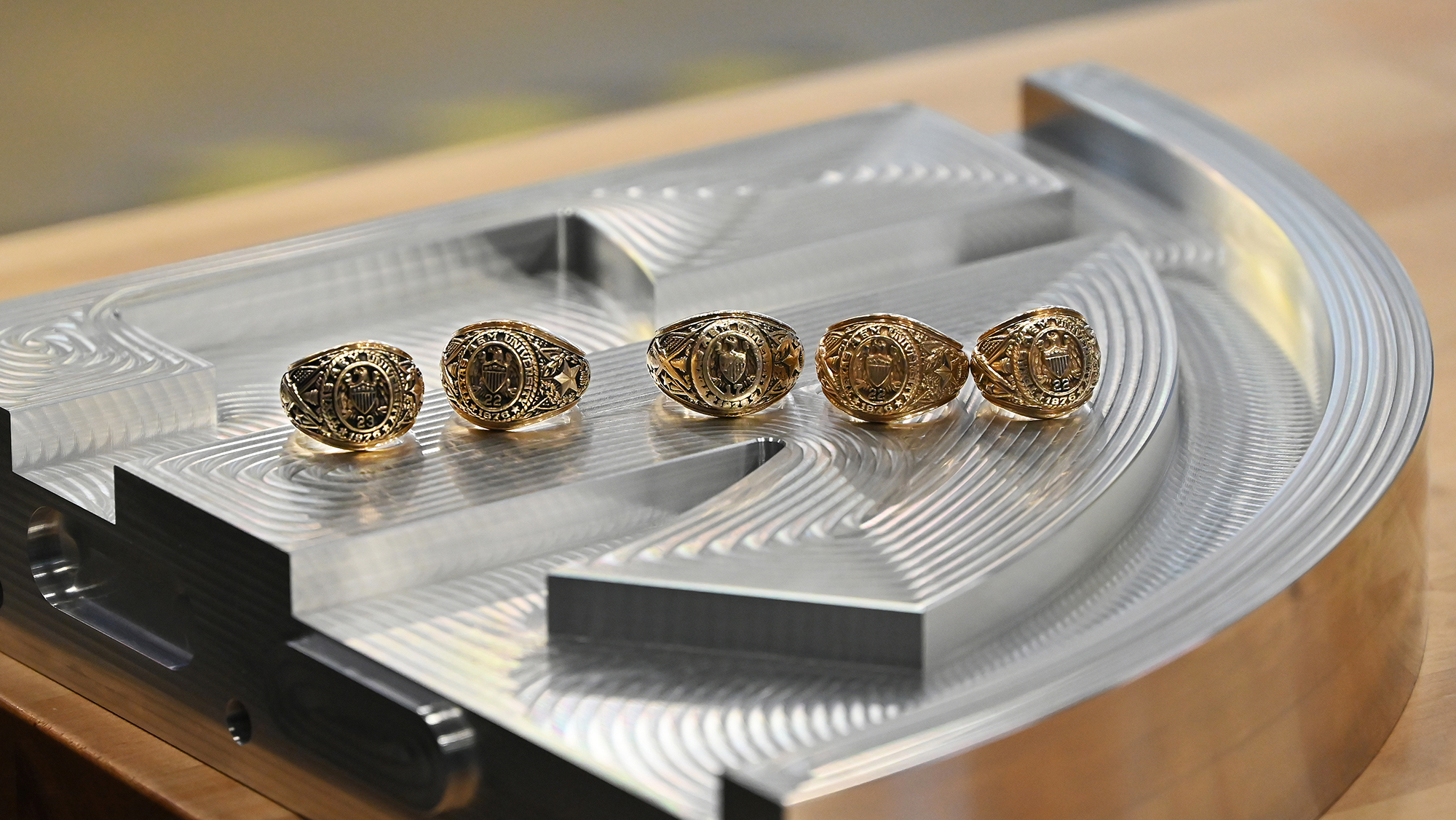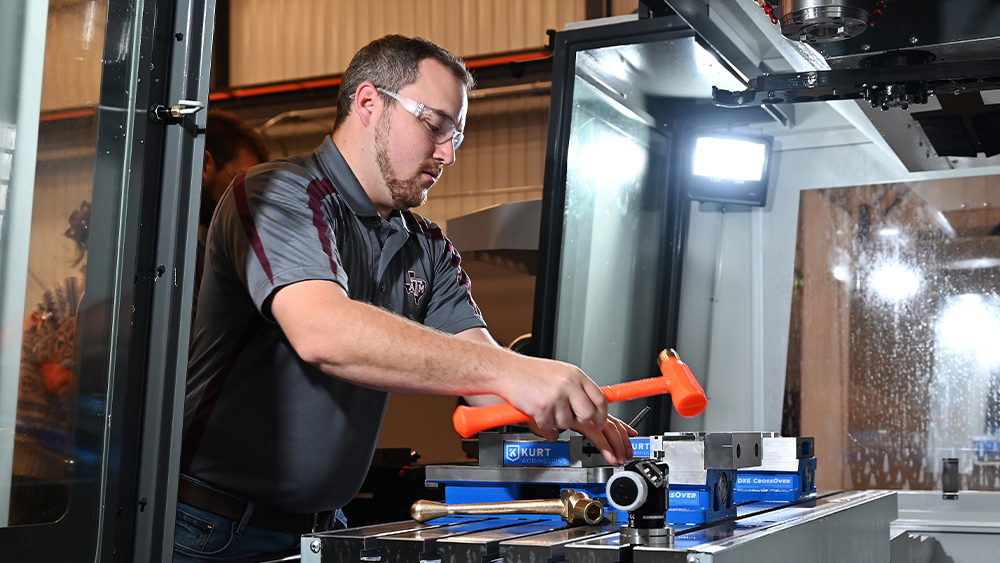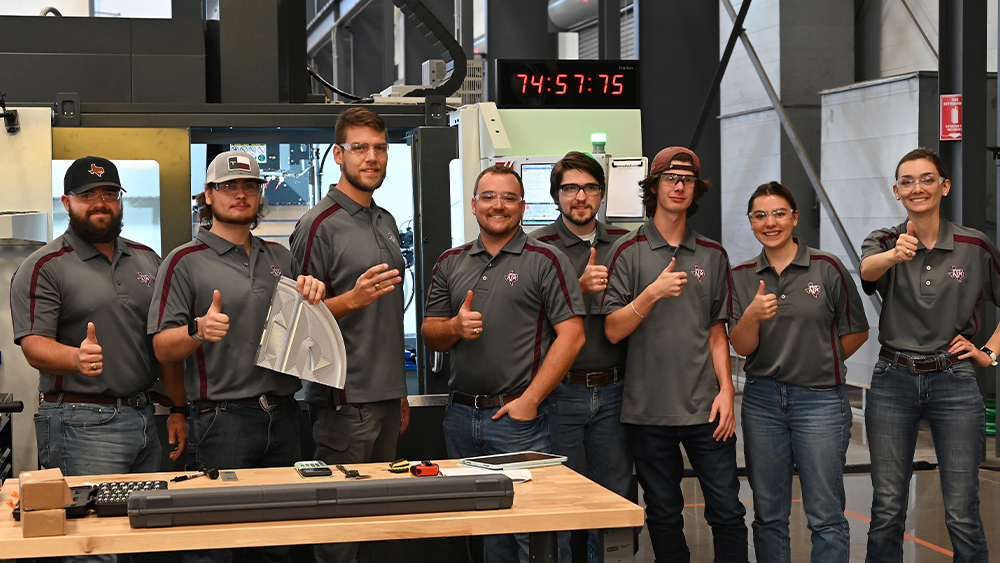
An eight-person team from Texas A&M University competed at the 2022 Southeastern Conference (SEC) Machining Competition in Knoxville, Tennessee. The competition is sponsored by the Department of Defense and the Industrial Base Analysis and Sustainment (IBAS) in conjunction with ProjectMFG through the SecureAmerica Institute (SAI), which is powered by the Texas A&M Engineering Experiment Station.
The competition allows university teams to display their machining abilities and problem-solving skills, learn more about computer numerical control machining and promote state-of-the-art manufacturing education and training.
The Aggie team included six undergraduates from the Department of Engineering Technology and Industrial Distribution — Colton Lee, Liam Fortier, Alyssa Bryd, Tobias Gualandri, David Nemec and Benjamin Smith — as well as two other engineering undergraduates — Nathan Panak from the Wm Michael Barnes ’64 Department of Industrial and Systems Engineering and Madeline Sellards from the Zachry Department of Civil and Environmental Engineering. The Aggies competed against other university teams made up of undergraduates and graduate students from Auburn University, Mississippi State University and the University of Tennessee.

"The event was both a collaborative effort and a competition between all the SEC schools," Lee said. "The major components that judges looked at were speed, dimensional accuracy, smoothness and surface finish. We practiced perfecting similar tasks on the equipment provided to us by SAI, and we went into the competition prepared and confident, thanks to SAI's support."
Headquartered at Texas A&M-RELLIS, SAI is a private-public research collaboration converging industry, government and academia to combine advancements in U.S. manufacturing resilience. Its members provide world-class leadership through applied research, scaled education and workforce deployment, economic analysis and policy recommendations, and market-driven technology transition.
SAI seeks to support and develop the United States manufacturing and defense industrial base from regional to national levels and strives to counter global marketplace supply chain disruptions, maintain leadership in developing and deploying innovative manufacturing technologies and products, and fully employ their people through comprehensive education and training in new and emerging advanced manufacturing technologies and processes.
“On behalf of SAI, I congratulate the Aggie group of students for an outstanding accomplishment,” said Dr. Dean Schneider, acting director of SAI. “We are proud to have been a part of their success, and we wish the team all the best as it moves forward to the next competition.”
"The Aggies had a strong start but quickly realized their machining fixture had been improperly installed. After fixing the issue, they finished with the competition’s best time of 74 minutes and 57 seconds," said Dr. Darrell Wallace, the Aggie team advisor and professor of practice in the Department of Engineering Technology and Industrial Distribution. "Though the Tennessee team's time was longer, their careful use of fewer tools and their proficiency in achieving excellent surface finish gave them enough of an advantage to claim the inaugural title."

"One of the speakers who impacted me was Adele Ratcliff, the director of the IBAS," said Byrd. "During the competition, Ratcliff talked to Sellards and me about how happy she was to see us competing in this space as women. It made me feel like she saw herself in us, women fostering the next generation of women in the industry, and that inspired me."
"We do some incredible things as engineers. However, it can sometimes be challenging to connect with other engineers, so to come together and do amazing things as a community is great," Lee said. "I am thankful for all the support from Dr. Wallace and Justin Carter, who helped with the logistics of our trip. Also, I am grateful to Dr. Tony Schmitz from the University of Tennessee, Knoxville, the originator of this competition, for helping make this event happen."
“The competition allowed us to bring people from the industry, national research and academia together into one place and learn from each other,” said Panak. “It was an awesome experience, and the team is eager to go back next year and win it.”
